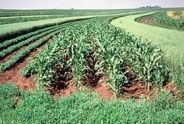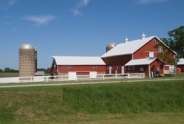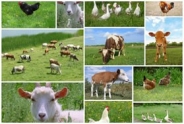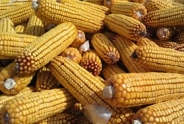Fall Lime Application
Katelyn Miller, Field Crops and Forage Specialist
Southwest New York Dairy, Livestock and Field Crops Program
Why apply lime in the fall?
A large benefit of applying lime in the fall is time. When spring rolls around, farmers are busy catching up. Between working fields, planting crops, harvesting 1st cutting, etcetera, time becomes scarce. When wet springs occur, getting everything done becomes even more of a challenge. Applying lime during a wet season can increase risk of compaction, creating the possible chance of more passes being necessary with tillage implements. With highly erodible fields, be cautious of your timing in relation to precipitation to ensure you're getting the most out of your lime. Another benefit is increased reaction time in the soil. A good rule of thumb is to apply lime 6 months before the desired pH for your crop is needed, therefore, applying lime in the fall creates ample time for your desired pH to occur.
Why is lime important?
Lime increases the pH of the soil, making it an important part of crop management. The pH level in your soil has an impact on nutrient availability in plants (see picture), nitrogen fixation in legumes, plant health and root growth. Crops have different required pH levels (see chart) making proper management essential to a strong crop. Inadequate pH will create a weaker crop because of poor growth, in turn reducing water intake, and make nutrients less available to the plant, creating possible deficiencies. To help avoid these problems, it is recommended to soil test approximately every three years to ensure that pH levels are appropriate for the crop you are growing.
How does tillage system impact lime results?
In a conventional tillage system, lime will get incorporated into the soil causing it to react faster. This is not the case with no-till, where pH needs to be closely monitored for changes because lime is only being applied to the surface. Due to this, there can also be pH differences among soil layers making close management key to a successful liming program.
Additional resources are available here:
Soil pH for Field Crops: Cornell University Nutrient Management Spear Program
http://nmsp.cals.cornell.edu/N...
Timing of Lime Application for Field Crops: Cornell University Nutrient Management Spear Program
http://nmsp.cals.cornell.edu/p...
Winter Limestone Application: Penn State Extension
https://extension.psu.edu/wint...
Upcoming Events
Memoir Reading: Barn Gothic
December 4, 2025
Bath, NY
Barn Gothic is an elegy for family farmers and an intimate portrait of three generations laboring to be fathers and sons while their livelihood falls apart. Beautifully told with a farmer's restraint and a poet's grace, it is a story of personal loss amid corporate corruption and of finding a way forward when everything you know disappears.
NY Small Farms Summit 2025: Stronger Together
December 5, 2025
Alfred, NY
We hope you will join us on December 5th for the 2025 New York Small Farms Summit! This is an opportunity to meet other farmers and ag supporters, learn about research and education projects, and set priorities for future efforts to grow small farm success.
At the Allegany County site, we will focus on giving trees a chance and how trees build resiliency on small farms. Whether attracted to fruit, nuts, vegetables, fodder or shade, trees can be an integral part of a successful farming system. Join us as we explore the opportunities for resiliency that come from adding tree crops or managing wooded areas of your farm for agroforestry or silvopasture systems.
Crops, Cows & Critters - Southwest New York Dairy, Livestock & Field Crops Newsletter Sponsorship
December 19, 2025
Our two forms of publications feature research-based and timely information from our four specialists, listed to the right, along with local event notifications and Cornell University outreach. This information is provided to participants who range from dairy, livestock, and field crops producers to agricultural suppliers and consultants.
Weekly Email Update: Shared with 625+ households who have signed up with our program.
Monthly Paper Mailer: To reach our stakeholders and farmers who lack internet access, we send out a monthly mailer where your company's logo and contact information would be featured with a mailing list of 330+ households.
If you sponsor our weekly and monthly publications you reach approximately 955 households.
Visit our website to view our newsletters!
Announcements
No announcements at this time.





